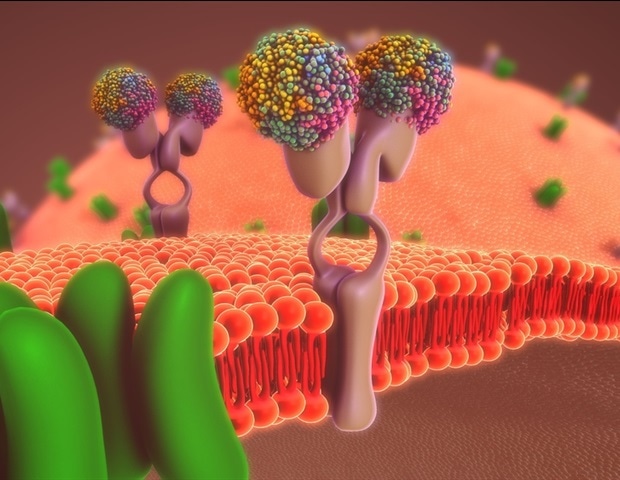Clinical trials in 2024 highlight the expanded benefits of glucagon-like peptide 1-based medicines, extending beyond glucose control and weight loss to address various disorders.
 Study: Expanding applications of therapies based on GLP1. Image Credit: MillaF / Shutterstock.com
Study: Expanding applications of therapies based on GLP1. Image Credit: MillaF / Shutterstock.com
In a recent study published in Nature Reviews Endocrinology, researchers review recent advancements in glucagon-like peptide-1 (GLP-1)-based therapies. In these studies, treatment indications for GLP-1 agonists have extended beyond diabetes to include applications for the treatment of cardiovascular and renal diseases, as well as sleep apnea and metabolic liver disease.
The health benefits of GLP-1 agonists
GLP-1-based therapies have revolutionized the management of type 2 diabetes mellitus. These agents mimic the incretin hormone GLP-1, which enhances glucose-dependent insulin secretion, delays gastric emptying, and manages appetite. The health benefits associated with GLP-1 agonists can improve glycemic control and promote significant weight loss, which is a critical factor in addressing obesity-associated comorbidities.
Semaglutide, a GLP-1 agonist, has been widely studied due to its versatility, efficacy, and ability to address multiple metabolic and cardiovascular concerns simultaneously. This growing evidence signifies a shift in how GLP-1 therapies are perceived, from antidiabetic agents to comprehensive tools for improving metabolic health.
The clinical benefits of GLP-1-based therapies include glucose control, as well as critical improvements in cardiovascular health, renal outcomes, and even conditions such as obstructive sleep apnea.
Cardiovascular benefits
Recently, the Semaglutide Effects on Cardiovascular Outcomes in People with Overweight or Obesity (SELECT) trial investigated the cardiovascular benefits of the GLP-1 agonist semaglutide in individuals with obesity but without diabetes. To this end, the SELECT trial reported a 20% reduction in major cardiovascular events, including myocardial infarction, stroke, and cardiovascular death.
These results were observed across various demographic and clinical subgroups, including those with differing body mass indices (BMIs), ages, and comorbidities. Moreover, the benefits were evident within months, which was significantly faster than earlier trials involving diabetes patients.
Supporting renal function
The Evaluate Renal Function with Semaglutide Once Weekly (FLOW) trial reported the efficacy of semaglutide in protecting renal function among type 2 diabetes patients with chronic kidney disease. More specifically, a 24% reduction in kidney-related events was observed, along with significant reductions in body weight and hemoglobin A1c (HbA1c) levels. These findings are particularly significant considering the growing prevalence of diabetes-associated kidney complications.
Obstructive sleep apnea
GLP-1 therapies have also shown promise in treating obstructive sleep apnea, a condition often linked to obesity. Tirzepatide, the dual GLP-1 and gastric inhibitory polypeptide receptor agonist, has been shown to reduce apnea episodes and weight loss significantly in clinical trials. These outcomes suggest a novel therapeutic approach for managing sleep apnea through metabolic interventions, thus further broadening the utility of GLP-1-based therapies.
Metabolic liver disease
GLP-1-based therapies have shown remarkable potential in addressing metabolic liver diseases, such as metabolic dysfunction-associated steatohepatitis (MASH). MASH is a chronic liver condition characterized by fat accumulation and inflammation that often progresses to fibrosis or cirrhosis if untreated. The emergence of GLP-1 receptor agonists and dual agonists, such as survodutide, offers a promising approach to managing MASH.
Recent phase II trials have demonstrated the efficacy of survodutide in improving liver health in individuals with biopsy-confirmed MASH. In fact, weekly doses of survodutide have been shown to significantly reduce MASH symptoms, with up to 67% of survodutide recipients experiencing a 30% or greater reduction. Moreover, weight loss of 10-13% was observed in treated individuals, thus underscoring the role of weight reduction in alleviating liver inflammation and fibrosis.
These benefits were observed without worsening fibrosis in most cases, which marks a critical advancement in the treatment of liver diseases associated with obesity and metabolic dysfunction. The mechanisms involved in these health benefits appear to extend beyond those attributed to weight loss.
GLP-1 agonists exert anti-inflammatory effects, which may be mediated by their actions on non-hepatocyte cells within the liver. This anti-inflammatory activity of GLP-1 agonists is a promising area of exploration, as it suggesqts additional therapeutic pathways independent of weight management.
Conclusions
GLP-1-based therapies, including co-agonists targeting additional pathways, have the potential to manage numerous health conditions, many of which are secondary to obesity and overweight. In contrast, distinct mechanisms of these drugs may improve others. GLP-1 agonists have been well-tolerated in trials, with adverse effects primarily limited to mild gastrointestinal symptoms, thus enhancing their suitability for long-term use.
Journal reference:
- Drucker, D. J. (2024). Expanding applications of therapies based on GLP1. Nature Reviews Endocrinology. doi:10.1038/s41574024010669

 7 hours ago
2
7 hours ago
2














.png)

.png)
.png)
.png)













 English (US) ·
English (US) ·  Hindi (IN) ·
Hindi (IN) ·